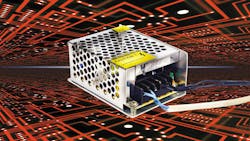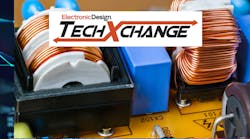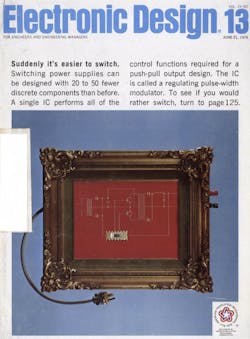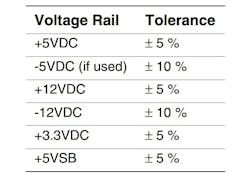A Brief History of Switching Power Supplies
This article is found in the Electronic History section of our Series Library.
What you’ll learn:
- The history of the switching power supply.
- How have these supplies changed over time?
Switched-mode power supplies are found in electronics all around us. They provide the DC voltages that power our computers, cell phones, chargers, appliances, and myriad other electronic devices. Regardless of the electronic devices at hand, they need a reliable source of power. This can come in many forms, such as batteries, AC power outlets, or solar power.
In all of those cases, the voltages from the power source must be converted into stable and usable voltages to meet the circuits' needs. For example, a typical AA alkaline battery will have a nominal voltage of 1.5 V, which will continually drop as its charge decreases. As a result, the circuits that are being powered need an efficient means of keeping their input voltage constant. This is where switching power supplies shine.
Voltage Conversion: Linear or Switching Power Supply?
When converting a voltage from a higher input voltage that may vary to a lower stable output voltage, there are primarily two choices. One is a linear power supply, and the other is the switching power supply.
Linear power supplies have the advantage of being simple to design and can provide the additional benefit of power-supply filtering. However, they generally require large capacitance at the input and output, and they can waste lots of energy. And that excess DC voltage is generally dissipated in the form of heat. This could also create thermal concerns, which typically requires heatsinks or fans to help dissipate the unwanted heat.
On the other hand, switching power supplies use a transistor that can switch thousands of times per second to convert the higher DC voltage into a lower DC voltage. While the switching power-supply circuit is more complex and may create electromagnetic interference (EMI), it requires smaller capacitors and has higher efficiency. One can expect a switching power supply to be above 80% efficient, with most designs achieving an efficiency greater than 90% (Fig. 1).
The Genesis of the Switching Power Supply
The theory of switching power supplies has existed since early on in engineering. However, it wasn't until the invention of the silicon transistor in the 1950s that the idea became practical.
Much development on switching power supplies occurred during the late 1950s, with General Electric publishing a design in 1959 and Pioneer Magnetics beginning to offer solutions. At that time, though, transistors were cost-prohibitive. This kept transistor power-supply designs out of many consumer applications and reserved them for strictly applications with the largest budgets.
For instance, NASA and the aerospace industry began incorporating switching power supplies into their applications in the 1960s. This was motivated by the circuit's small size and high efficiency. It wouldn't be until a decade later that costs would come down enough whereby transistor-switching power supplies would find their way into consumer applications.
Switching-Power-Supply Revolution Kicks Off in the 1970s
In the late 1960s, switching power supplies began to find their way into products available to the public, but the 1970s was when the real "revolution" began. For example, Tektronix incorporated a switching power supply into a portable oscilloscope in 1966, and RO Associates introduced a 20-kHz switching circuit in 1967, which is regarded as the first commercially successful switching power supply.
Nevertheless, in the early 1970s, Hewlett-Packard, IBM, and RCA all began integrating the switching circuits into their computer designs. Around the same time, color television sets began being powered by switching circuits. Throughout the 70s, popular electronics magazines such as Electronic Design, Electronics World, and Computer Design all began to feature cover articles around the topic. This includes the 1976 cover of Electronic Design that read "Suddenly it's easier to switch" (Fig. 2).
All of the advances being made at that time were also a byproduct of the evolution of transistor technology. Transistors were becoming cheaper, faster, and capable of operating at higher voltages. Suddenly, switching circuits were capable of operating at higher frequencies, improving efficiency, size, and heat dissipation.
Any new and exciting power supply that was designed during this time would only reign supreme for a short period of time before a smaller, more efficient, and overall more capable design was brought into the market. Since transistor pricing was beginning to decrease, these supplies cost less to make and would enable the technology to begin to work its way into everyday consumer products.
Standards and Specs Arrive for Supplies
In the 1990s, standards began to be put in place regarding power supplies. Some of them included form factors, while others were more focused on the performance of the devices.
For example, in 1995, Intel developed the ATX power-supply specification for computers. This standard still prevails today—computer power supplies generally have dimensions of 150 × 86 × 140 mm. Furthermore, they will provide output voltages such as 3.3, 12, and ±5 V. Additional performance specifications include a supply tolerance (typically ±5%) and voltage ripple (Fig. 3).
Another example of a standard that began in the 1990s and still exists today revolves around electromagnetic-compatibility (EMC) emissions. Indeed, switching transistor circuits can create a large amount of EMI. This wasn’t an issue until electronics began becoming more prevalent in society. Such electromagnetic radiation emitted from a switching circuit can create interference with other electronic devices.
The EU eventually stepped in with legislation to help control the amount of EMI a device can emit. EMC emissions are still very much a key consideration today and much more stringent than they were in the 90s.
Overall, switching power supplies are a key part of many of today’s electronic systems. Their technology has continuously evolved to allow for higher efficiency, smaller size, higher power handling, less power supply ripple, more stability, and less electromagnetic emissions. As electronics continue to evolve and become smaller and more efficient, so will switching power supplies.
Read more articles in the Electronic History section of our Series Library.
About the Author
Cabe Atwell
Technology Editor, Electronic Design
Cabe is a Technology Editor for Electronic Design.
Engineer, Machinist, Maker, Writer. A graduate Electrical Engineer actively plying his expertise in the industry and at his company, Gunhead. When not designing/building, he creates a steady torrent of projects and content in the media world. Many of his projects and articles are online at element14 & SolidSmack, industry-focused work at EETimes & EDN, and offbeat articles at Make Magazine. Currently, you can find him hosting webinars and contributing to Electronic Design and Machine Design.
Cabe is an electrical engineer, design consultant and author with 25 years’ experience. His most recent book is “Essential 555 IC: Design, Configure, and Create Clever Circuits”
Cabe writes the Engineering on Friday blog on Electronic Design.





